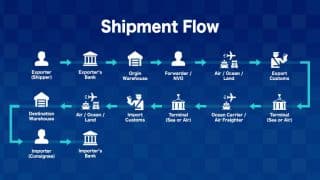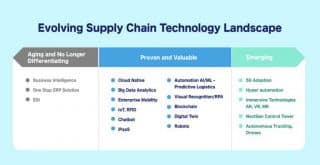Evolving digital supply chain technology landscape and its impact on freight forwarding
June 26, 2023 Freight ForwardingSupply Chain
Today’s modern technology enables people to buy anything from the comfort of one click, track the order in real time and share their happiness or vent out their frustration instantly through social media. We are in midst of covid-19 pandemic, corporates are trying to streamline their work between regular office and remote work from home model. In this highly volatile environment, managing the logistics activities comes with its own set of challenges.
With the frequent lockdowns and the disruptions in supply chain, freight forwarders needs to live with uncertainty where the predictability of the near future goes for a toss. While the demand is gradually picking up globally, there are supply side constraints such as shortage of containers, soaring price of container rates, port congestion etc. In this new reality, one of the major challenges is to address the communication and collaboration among the various stake holders real time. Freight forwarders need to deal with fragmented nature of business environment composed of various stakeholders as shown in below picture

The major challenge of today’s freight forwarder is how to keep their customer retained? One of the key aspects is to earn customer’s credibility and trust. Providing shipment visibility and transparent communication starting from sales enquiry to real time updates on each shipment milestone goes a long way in gaining the trust. To serve this, freight forwarders need to maintain all their business information in a single place, right from the sourcing prospective clients, receiving enquires, quotation, approvals, booking confirmations, collaborating with shipping liners and transporters, tracking shipment and delivery, followed by billing and collection. Several Technologies had made digital supply chain a reality today. Please find the evolution of technologies in digital supply chain technology landscape

Let us look at some of core features of a modern digital freight forwarding software which addresses the problem
Configurability of the freight forwarding software to suit business needs
Shipping lines raise demurrage charges on the basis of one unit of equipment left in their space per additional unit of time. Typically these values correspond to a single container left in the yard per extra day than was allotted. The charges are applicable from the end of the last free day until the container is removed from the premises. Knowing these charges and how they function can help plan out any possible delays in container storage beforehand. For example, if you expect a shipment or container retrieval to be delayed, you can safely plan ahead on these charges or avoid them altogether.
Plan shipments well in advance
- Easily customisable to make changes and tailored interfaces according to your business needs without requiring code changes is the first step.
- Modern technology enables us to build highly flexible, metadata-driven architecture leveraging micro services, paired up with micro front ends and orchestrating business process workflows in the back end.
- Role and Rule based configurations at various stages of product – build and packaging, deployment and toggling features at runtime makes the product to suit user needs. This empowers internal teams and external partners with a tailored interface.
Integrate all of your data sources
- Harmonize data across multiple sources — including customer relationship management (CRM), enterprise resource management (ERP), transport management (TMS), warehouse management (WMS) and financial management (FMS) systems
- Having configurable data pipelines and workflows allow user to surface critical information into a single source of truth in near-real time.
Automate manual business processes and streamline
- Manual processing of various documents or scanned images ranging from bill of landing (BL), Master bill of landing(MBL), air waybill(AWB), commercial invoice, Export packaging list, Shipping instructions, Deliver Orders and manifest can be automated using AI/ML based solutions.
- Flexible, role-based workflows that automate and streamline everyday processes which results in cost saving and increase in productivity. Rapidly identifying exceptions and anomalies in real-time and resolving issues with little or no manual intervention frees up valuable resources to create customer value.
Communicate across your entire supply chain
Collaboration, allowing internal teams, external partners, and customers to communicate faster and with less friction all in one platform. Share information in real-time, from a single source for unparalleled visibility and faster problem-solving
Data Security
We are observing spike in cyber security attacks in recent times and the modern freight forwarding system should provide advanced threat protection against the targeted phishing attacks, business email compromise, zero-trust cyber security measures and tighter controls to prevent data loss and account takeovers.
Conclusion
As business requirements evolve, organisations encounter challenges such as lack of scalability of a chosen solution. The streamlining of internal business processes, connecting disparate shipping and logistics systems, ingesting structured and unstructured datasets, orchestrating teams, and automating various business processes are huge challenges for any organisation and critical in achieving the digitisation and automation.
Adaptability of the freight forwarding system to the changing demands and technology is key to scale up your business.


